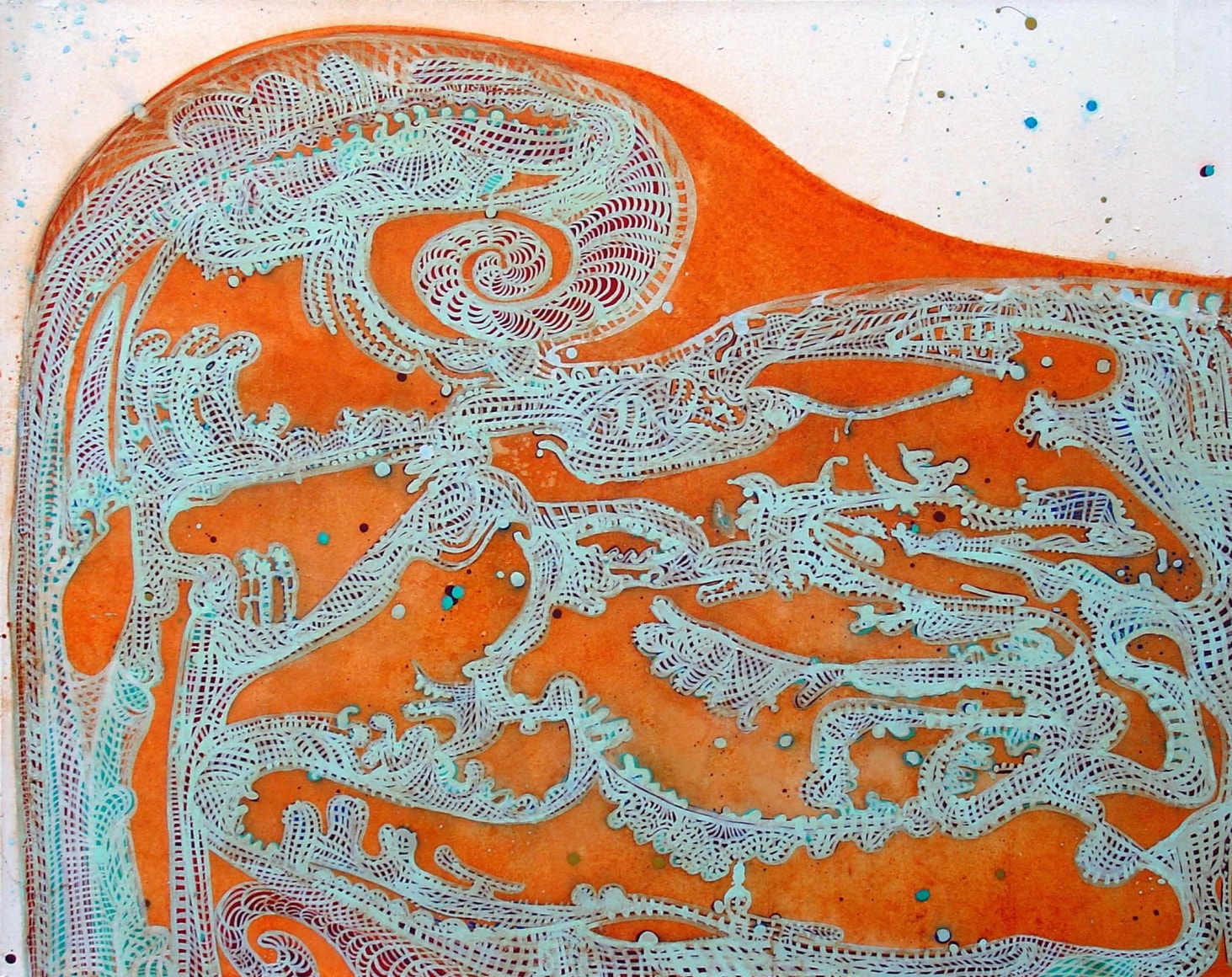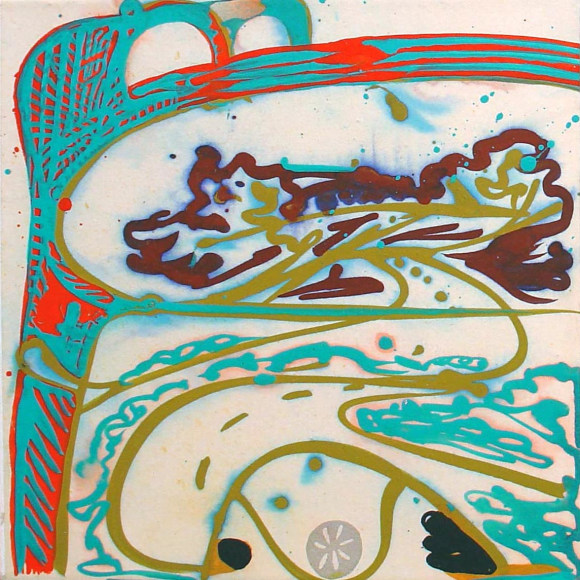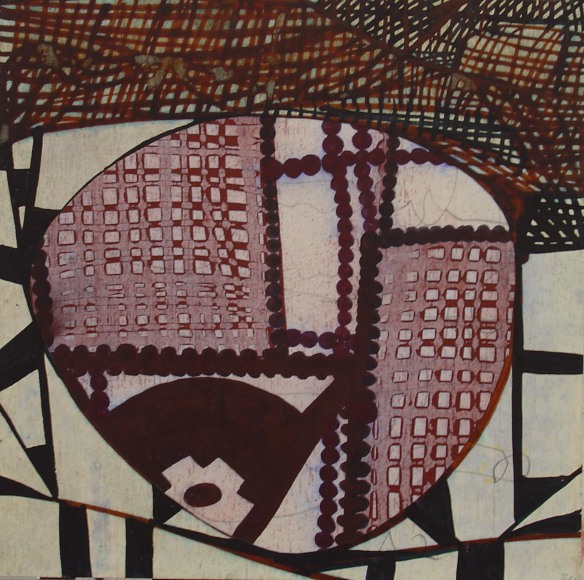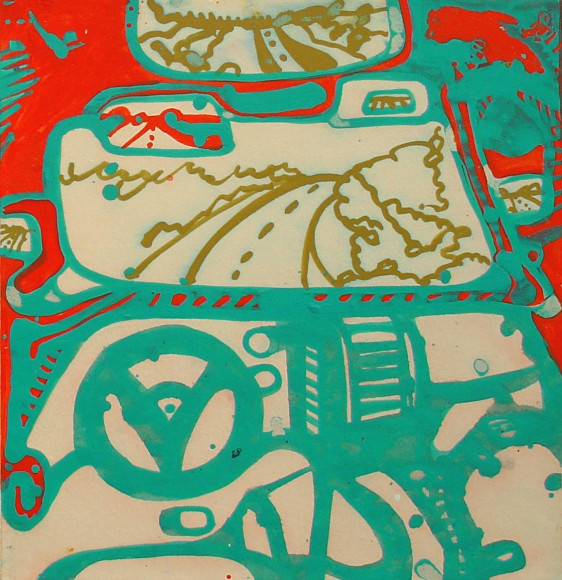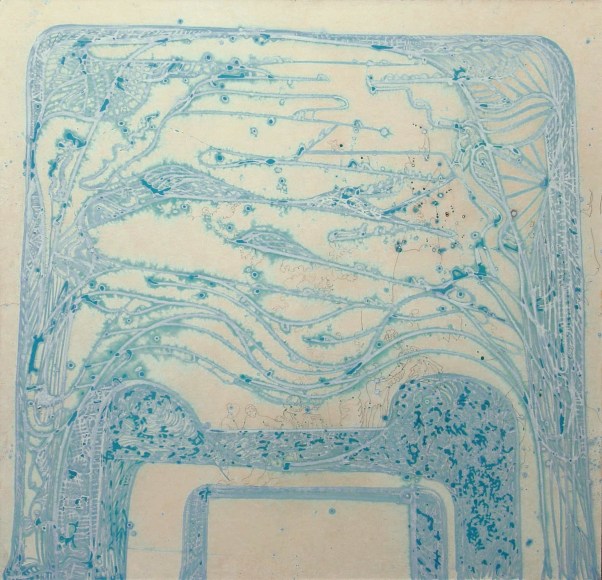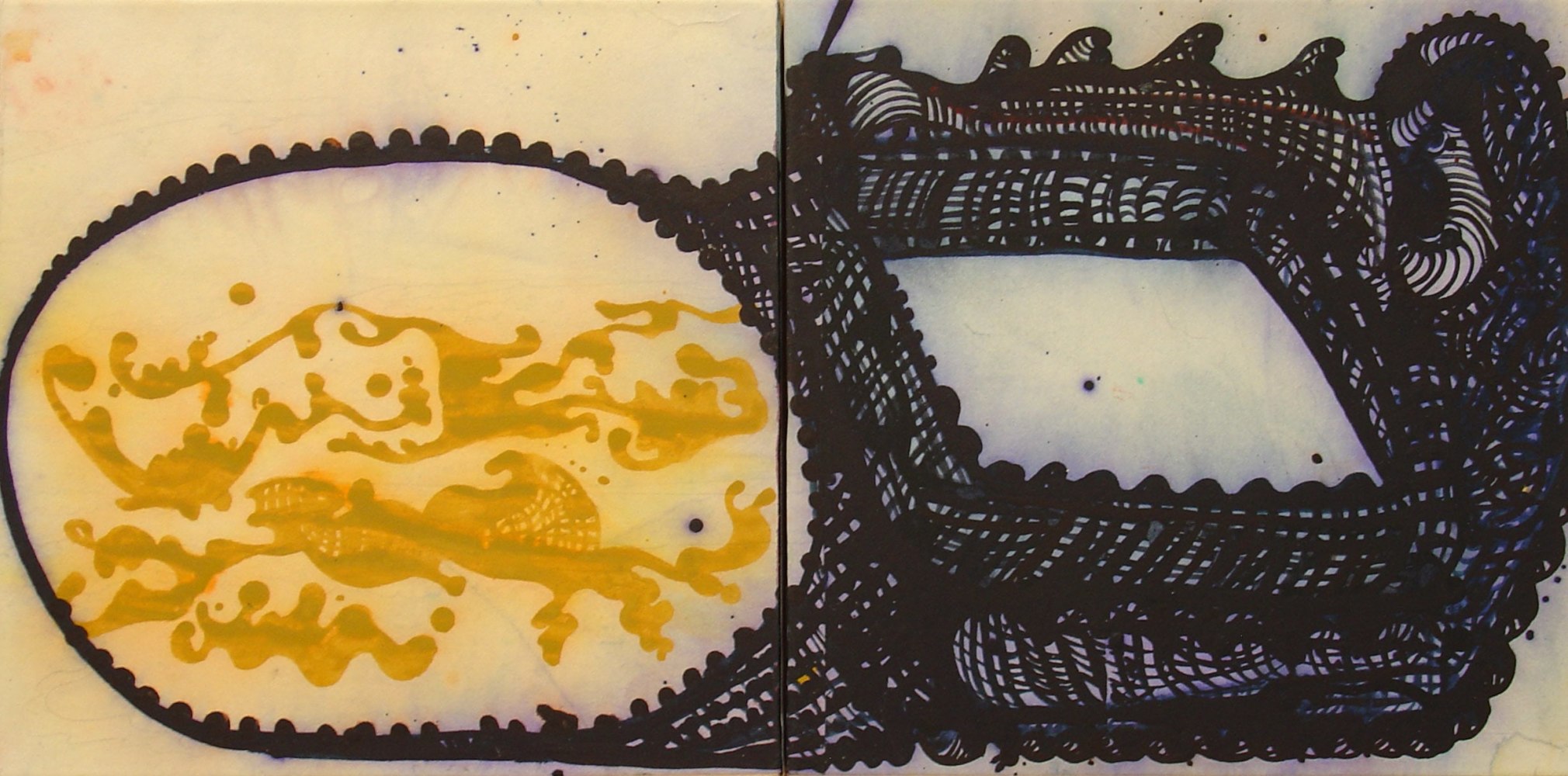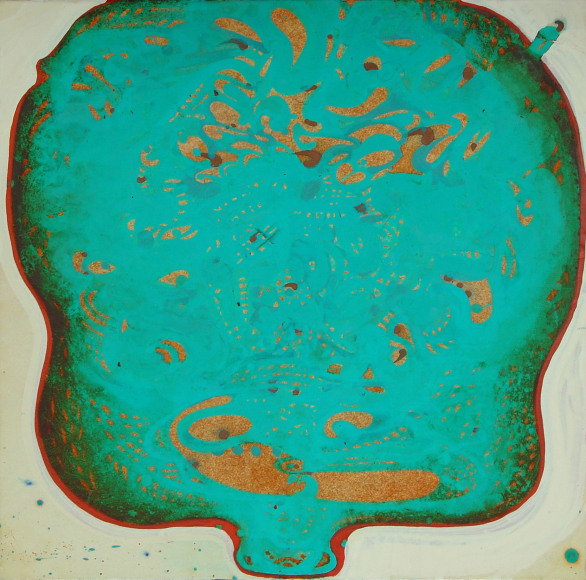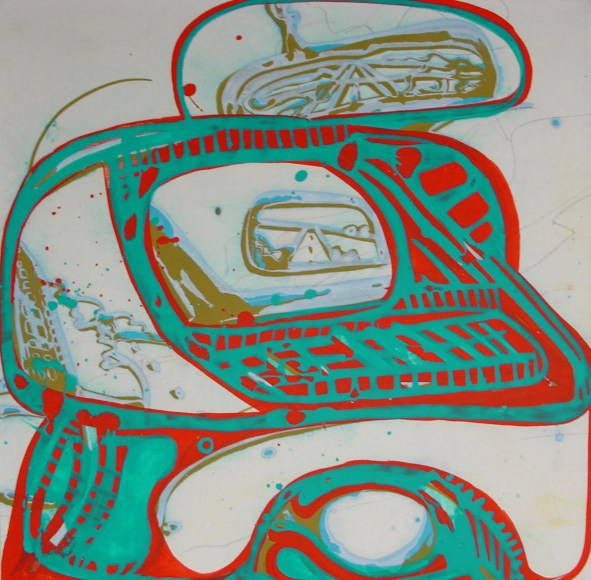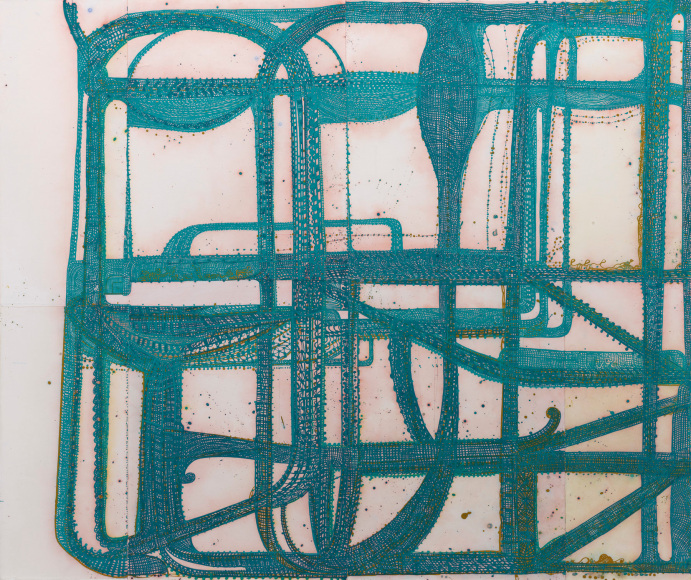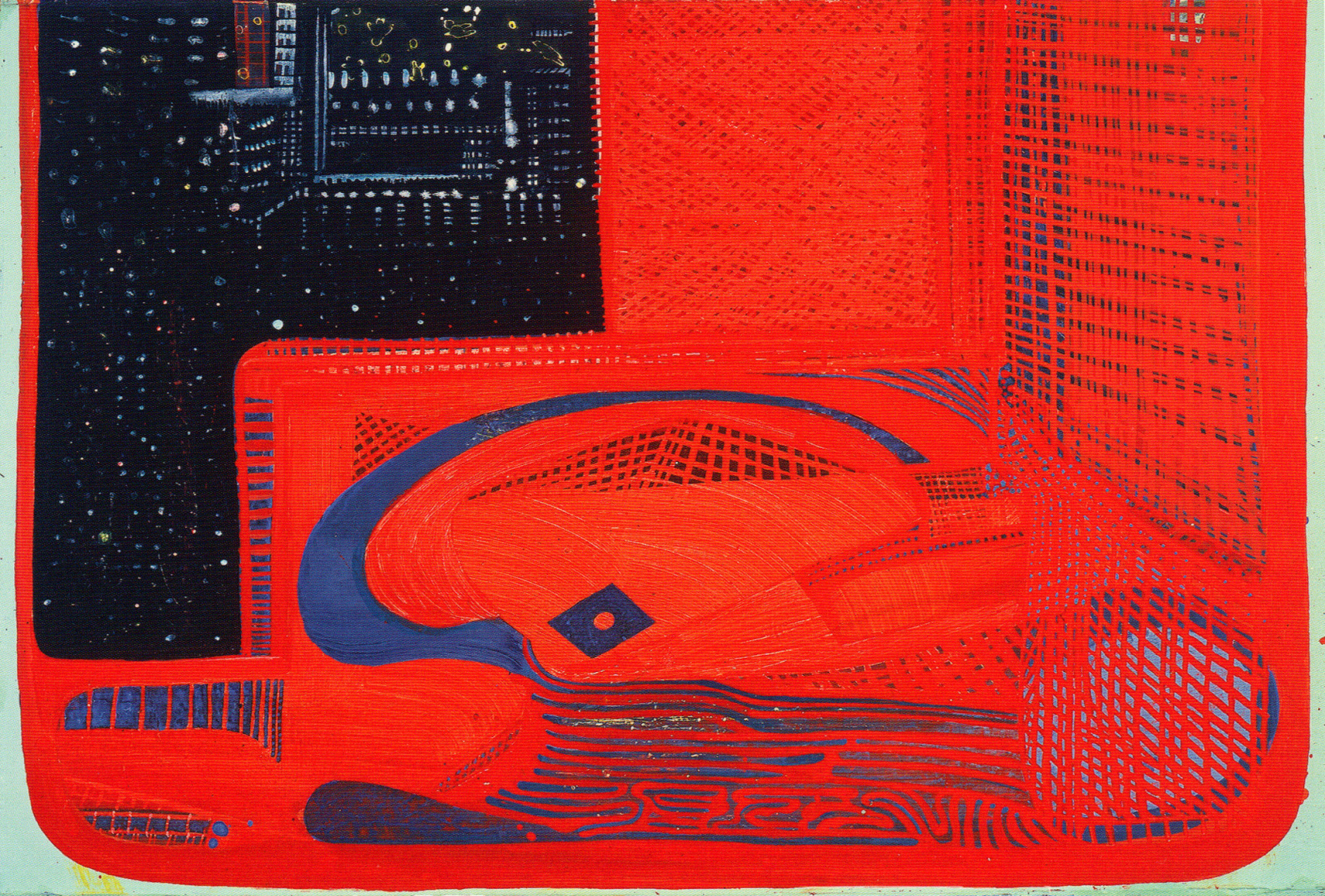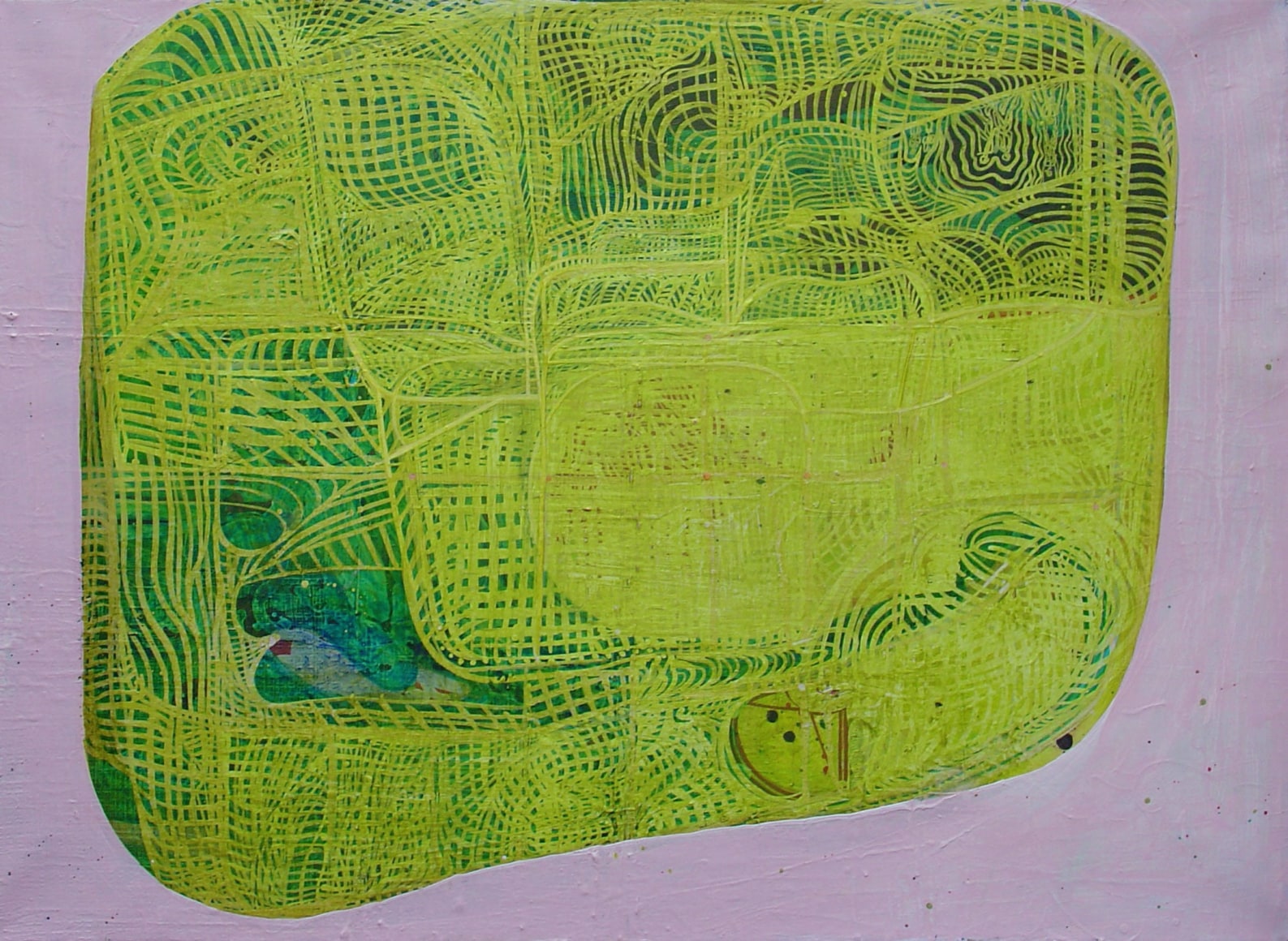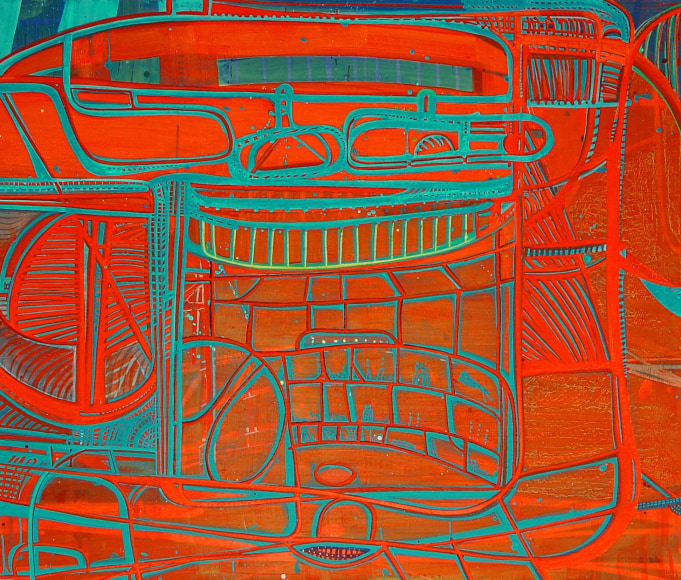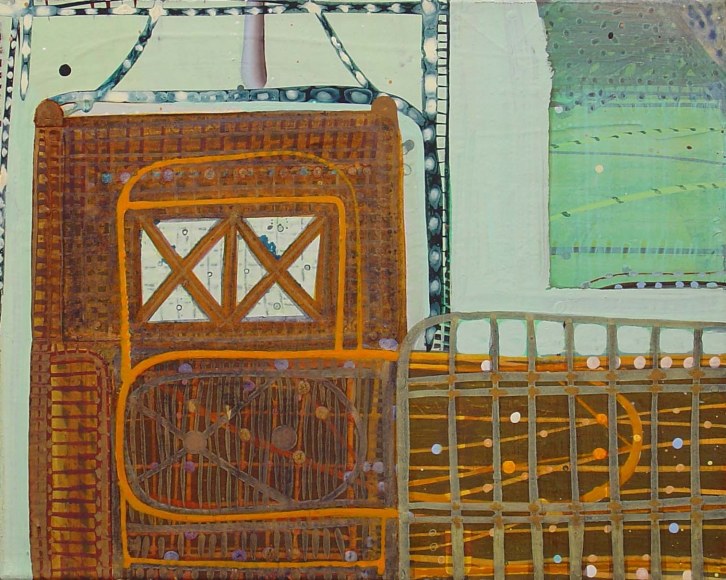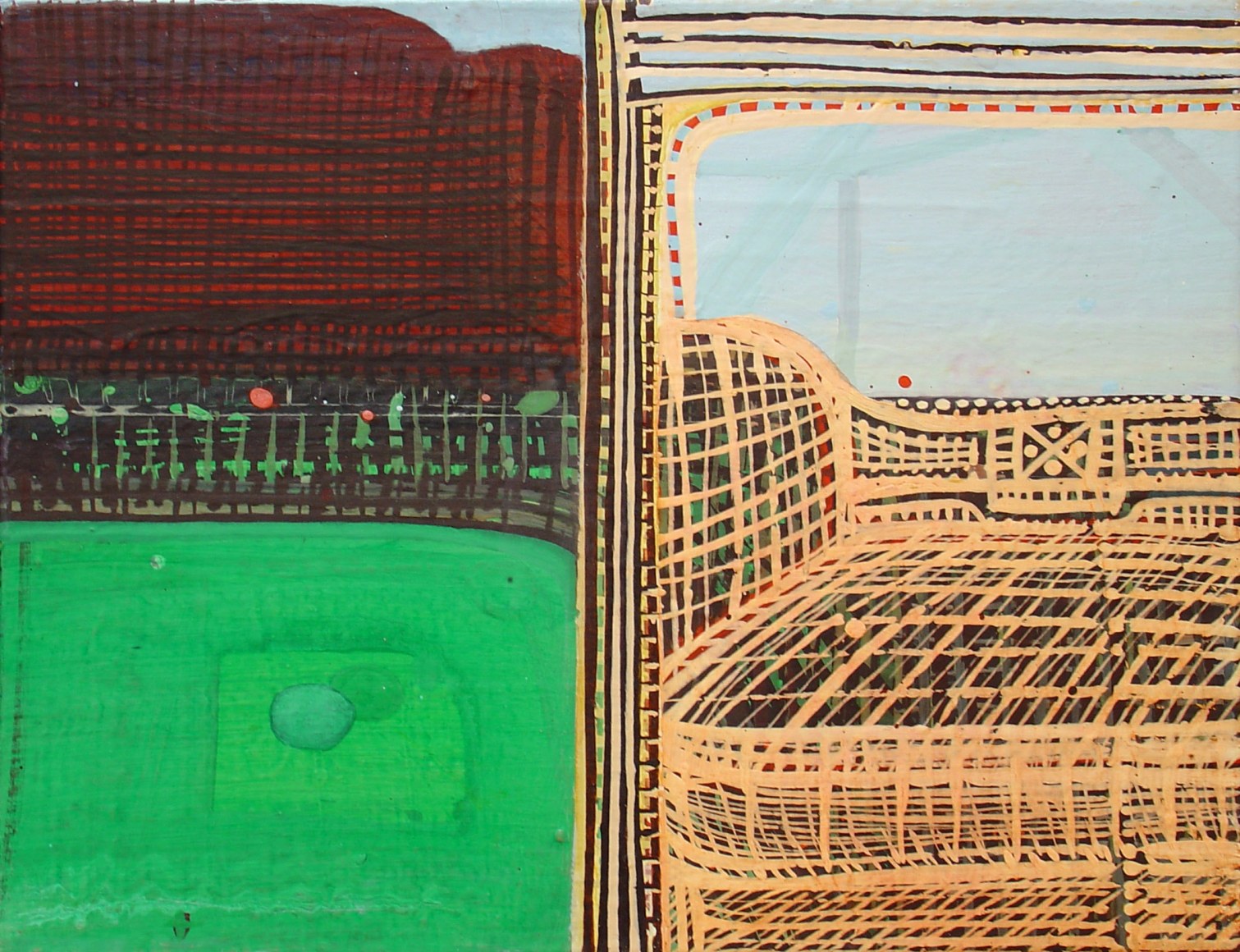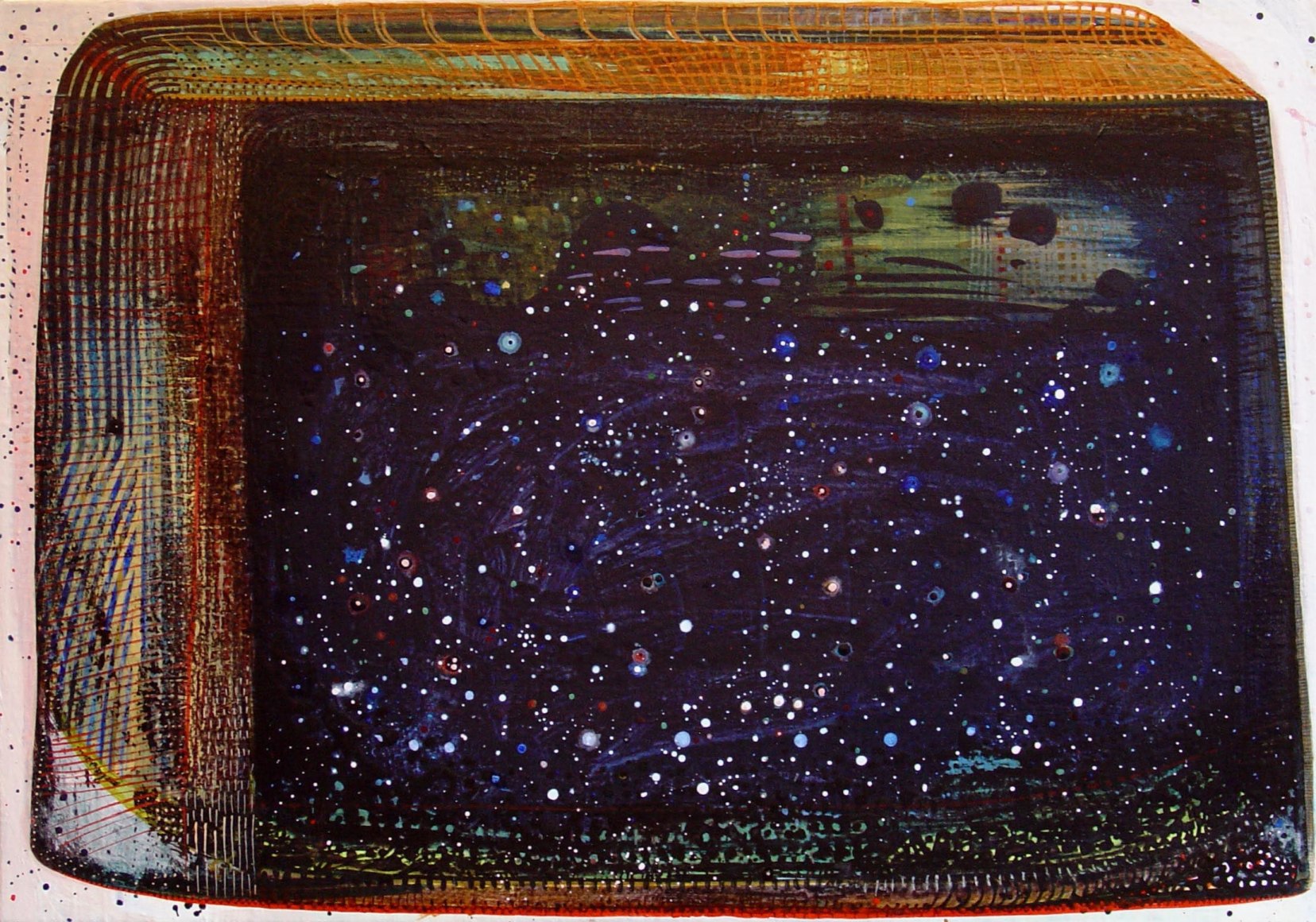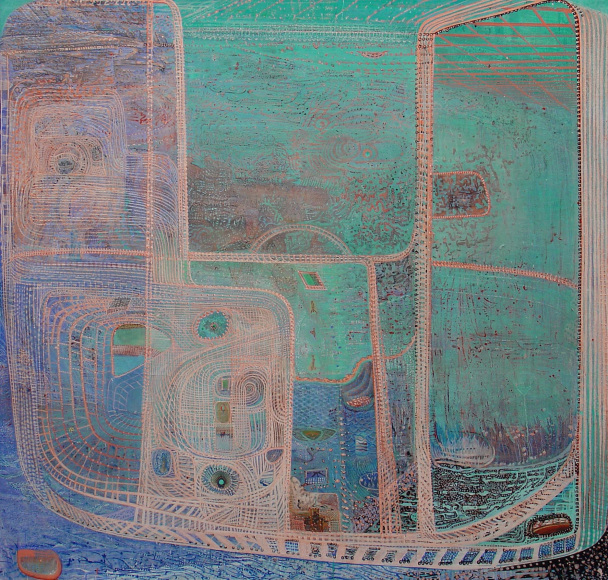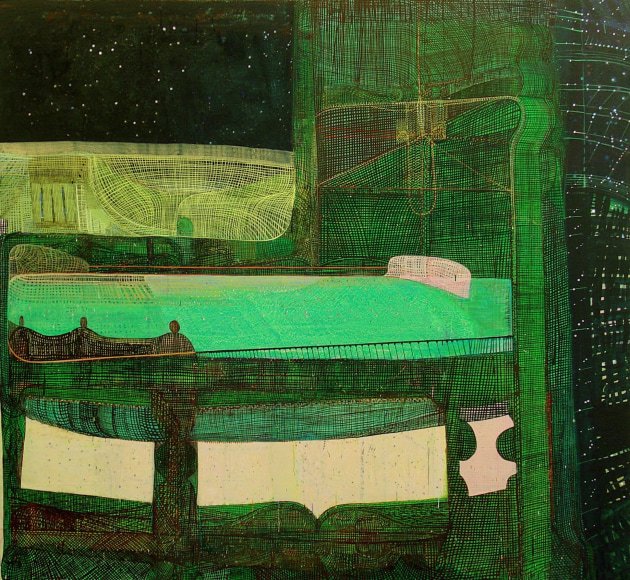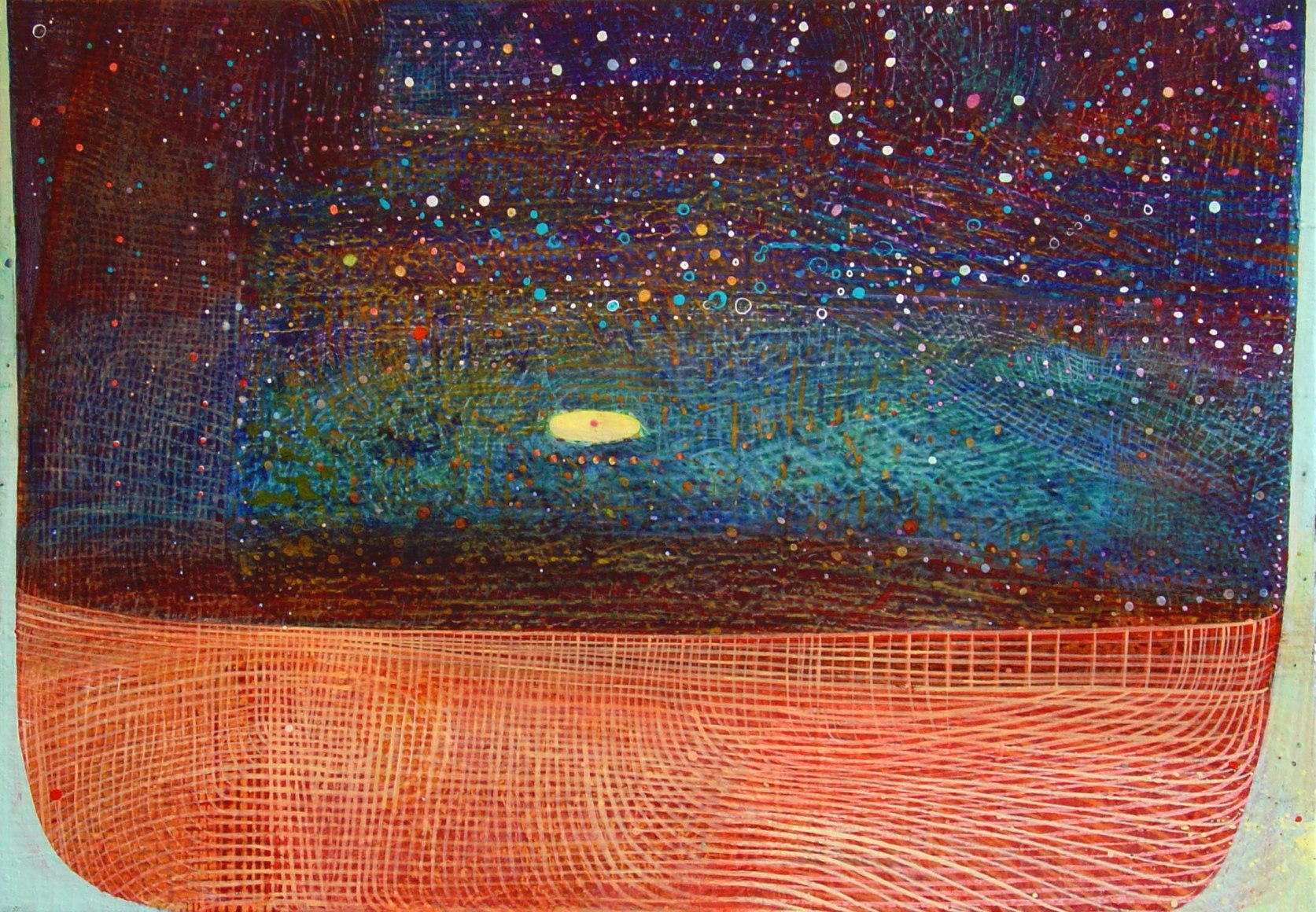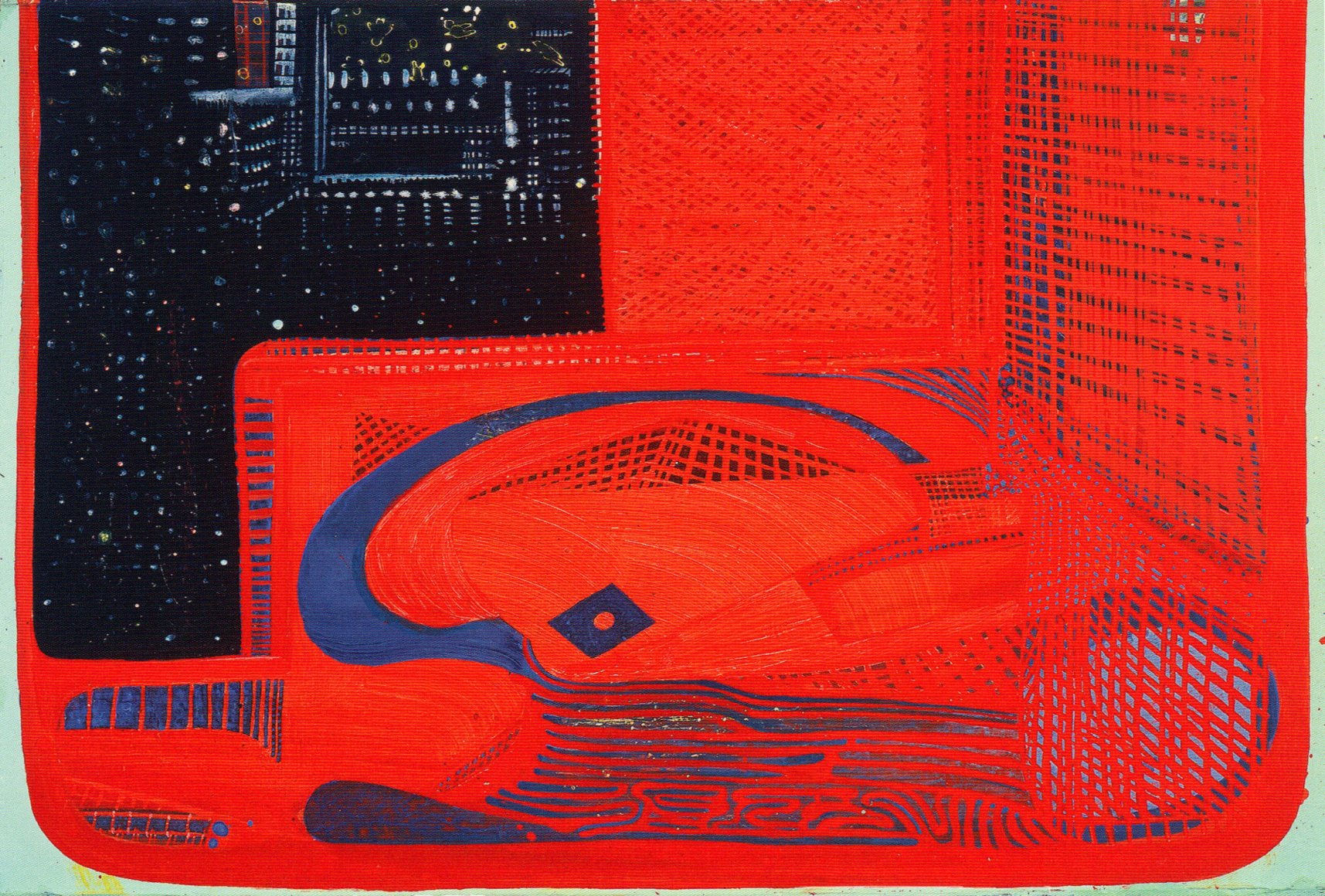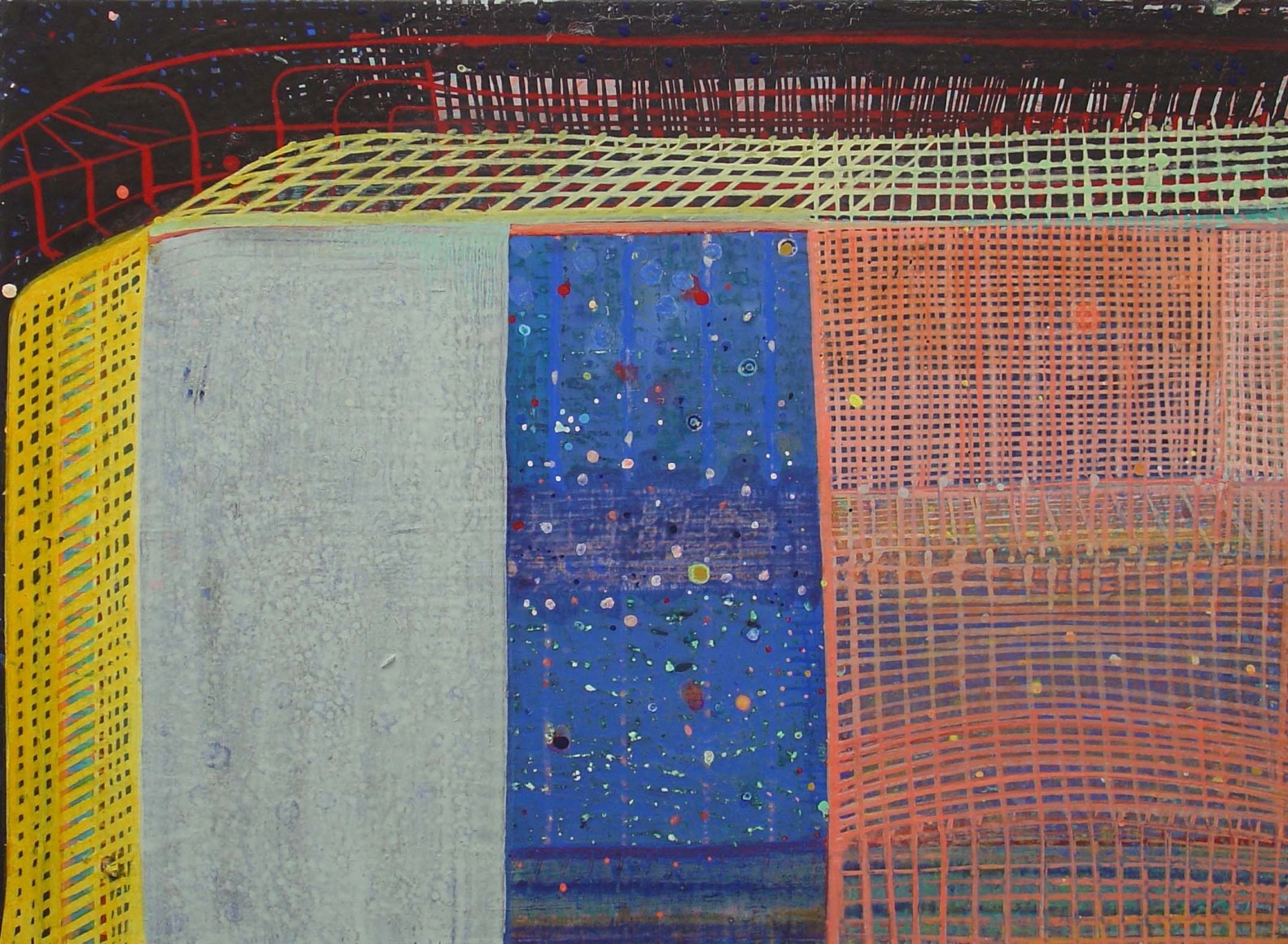
“While there is nothing automatic about the poem, nevertheless, it has an automatic aspect, in the sense that it is what I wanted it to be without knowing before it was written what I wanted it to be, even though I knew before it was written what I wanted to do.”
–Wallace Stevens
From October 22nd to November 25th, 2009, Lori Bookstein Fine Art is pleased to present paintings by Sharon Horvath. This is Horvath’s first show with Lori Bookstein and the gallery’s inaugural exhibition in its new Chelsea space at 138 Tenth Avenue between 18th and 19th Streets.
Horvath’s personal iconography is a mix of inspired sources as diverse as the paintings of Edward Hicks, Martin Ramirez, Antoine Watteau, and Sassetta, Medieval World maps, Etruscan funerary objects, Roman fresco painting and furniture, and the writings of D.W. Winnicott and the poetry of Wallace Stevens. Ordinary experience figures prominently: whether as glimpses captured in a rear view mirror, the little league playing fields of Brooklyn, the breaking waves on Cape Cod, or highway exit ramps under construction. Whether the points of departure constitute a poetic reference or mundane object, Horvath imbues her subject with a lyricism which transcends the original material. The imagery of her created world is eerily palpable without ever being literal. This “third space,” as she has called it, is “an intermediate territory distinct from either inner or outer worlds.”
Horvath’s distinctive painting method carries the feeling of the paintings, as the viewer is always aware of looking at a handmade object, tangible like the body, with metaphorical skin and bones. Using acrylic polymers and dispersed pigment on canvas or paper, Horvath builds up her surfaces much like a textile weaving – lines of color crisscross into shaky grids or merge into organic systems. These built-up strokes form dense layers; the result of an intuitive, layered “conversation” between the painter’s sensibility and the natural restrictions of the painting process. What begins as the ground is by the end of her process often illegible as such, while elements apparently at the surface may recede to the background and vice versa. She has said of her painting, “I’d like you to see a place as if you are hovering far above it, and at the same time digging in the ground. You are large, then you are small. When you are small you can enter into things. When you are large you can see more. Artists enjoy making these switches before our eyes.”
Horvath confounds the distinction between interior and exterior, far and near, figure and ground. By working up to and often over the very edge of her canvases, she explores the paradox of painting as both object and picture. Horvath’s paintings are populated from time to time by small figures or images incorporated into or caught in the web of her structures. Like the compositions themselves, these inhabitants occupy an ambiguous space and place, as if fossilized or metabolized into slow-growing organic structures. These tiny figures are not unimportant for being small. They are mischievous, and active. In an essay which has captivated the artist, Robert Louis Stevenson wrote about the narrative activities in the world of his “little people” at play (before he “trained” them to perform like a support staff, ghost writing for him in his dreams):
…tales where a thread might be dropped, or one adventure quitted for another, on fancy's least suggestion. So that the little people who manage man’s internal theatre had not as yet received a very rigorous training; and played upon their stage like children who should have slipped into the house and found it empty, rather than like drilled actors performing a set piece to a huge hall of faces…
The artist, culling from representations of worlds tiny enough to follow the laws of magical thinking, and maps of the world and cosmos, opens up strange interior landscapes for others to glimpse.
The title of the exhibition, “Parts of a World” is borrowed from the title of Wallace Stevens’ book of poetry published 1942, as are the titles of several paintings borrowed from his poems, including Dezembrum, Palaz of Hoon, Description Without Place and Human Arrangement. These borrowings are a tribute to the poet’s lifelong involvement with, in his words, “the incessant conjunctions between things as they are and things imagined.”
Sharon Horvath received her BFA in 1980 from the Cooper Union, New York and her MFA in 1985 from Tyler School of Art, Philadelphia. She is an Associate Professor of Art at Purchase College, SUNY, and lives and works in New York City. Since 1987, she has exhibited in New York, Philadelphia and Boston, and internationally.
Horvath’s numerous awards include the John Simon Guggenheim Memorial Foundation Grant for Painting, the Jacob H. Lazarus-Metropolitan Museum of Art Rome Prize from the American Academy in Rome, the Anonymous was a Woman Award, the American Academy of Arts and Letters Richard and Hilda Rosenthal Award for Painting, the Edwin Palmer Prize in Painting from the National Academy Museum and two Pollock-Krasner Foundation Grants.
“Sharon Horvath: Parts of a World” will be on view through November 25th, 2009. Gallery hours are Tuesday through Saturday, 10:30am to 6:00pm. For additional information and/or visual materials, please contact the gallery at (212) 750-0949 or info@loribooksteinfineart.com.

